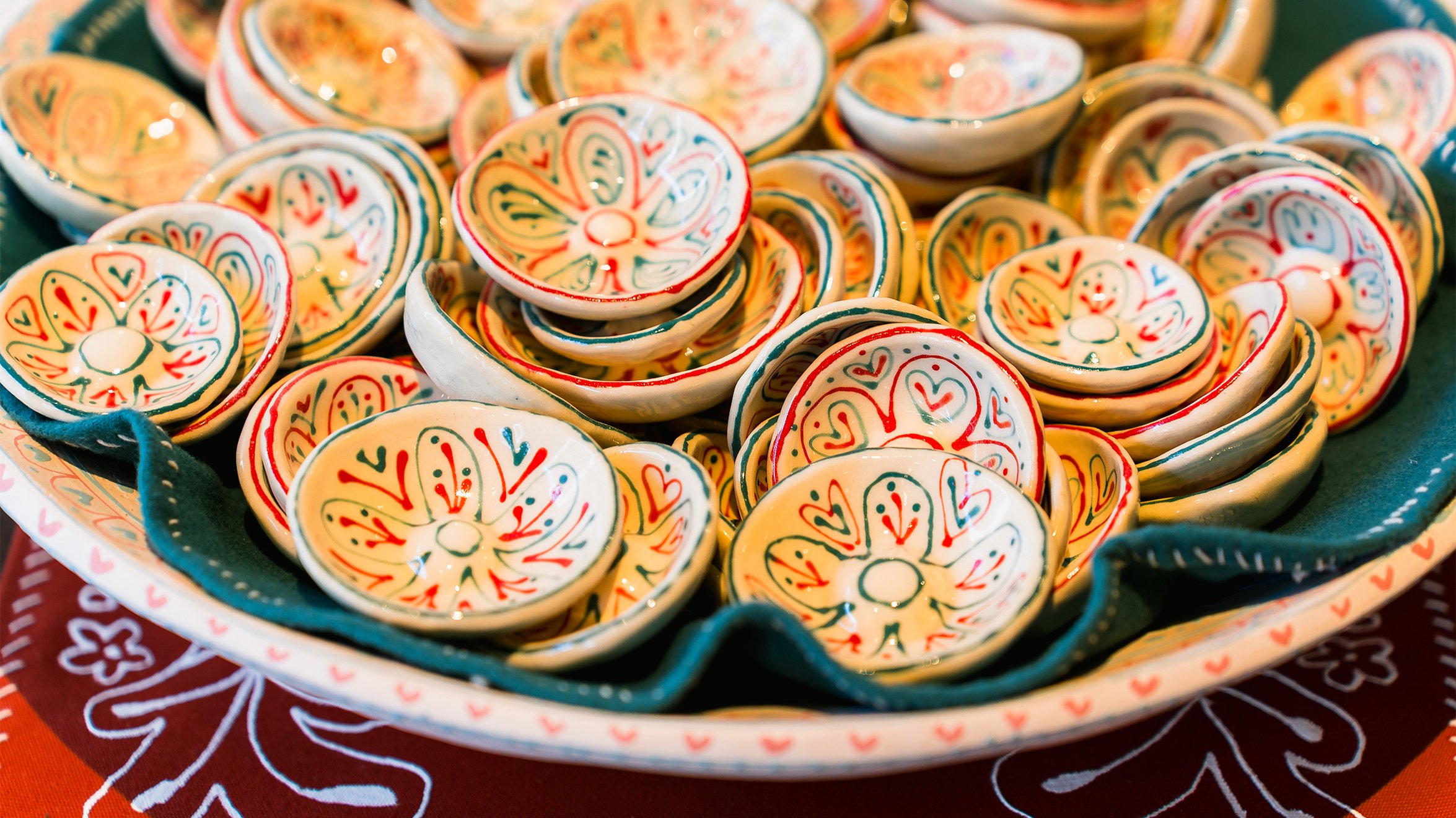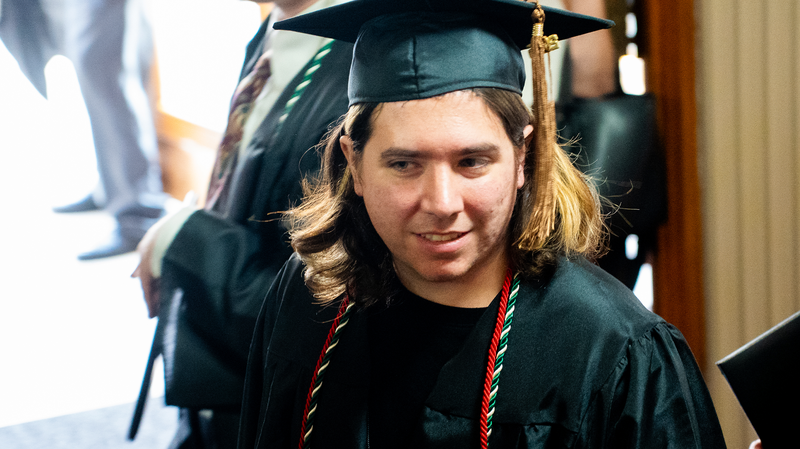
KCAI Announces 2025 Accessibility Prize Recipients
06.23.2025
KCAI celebrates the 2025 Accessibility Prize winners—Alex Gorsuch, Sophia Koch-Holdsworth, Katelynn Stevens, and Violet Zadoyan—for their innovative and inclusive works, each created as part of their senior projects.
The Kansas City Art Institute (KCAI) is proud to announce the recipients of the 2025 Accessibility Prize. Each year, the KCAI honors student work that exemplifies one of its core tenets.
This year, in celebration of Accessibility, the Council invited BFA Exhibition curators Amy Kligman and Eric Dodson to select works that best reflect this principle. The 2025 Accessibility Prize is awarded in honor of Keith Kirkland, Council Chair and Leonard Pryor Fellow, whose pioneering work in haptic technology continues to shape the conversation around access in design and experience.
KCAI recognizes the following graduating seniors for their outstanding contributions.
These students and their work demonstrate a deep commitment to creating experiences, spaces, and messages that are inclusive and engaging for all audiences. These students exemplify the future of accessible art and design.
Alex Gorsuch ('25 Illustration), Duoportraiture
Sophia Koch-Holdsworth ('25 Ceramics), The Little Things Add Up
Katelynn Stevens ('25 Graphic Design), Tuftome
Violet Zadoyan ('25 Graphic Design), I Live in My Journal
Alex Gorsuch
Eric Dodson described Gorsuch’s project, Duoportraiture, as featuring “a drawing apparatus that invites viewers to draw portraits of one another and display them together on the wall. The inclusive nature of this activity implies that anyone can take part in the art-making process.”

Gorsuch says he set out to create a process which could make drawing more collaborative and freeform, believing every human has a unique voice, regardless of training or technical knowledge.
“And I wanted to put that fact on display with the juxtaposition of two different artist's natural mark making and observational abilities within a singular image. I also wanted to make drawing more accessible and lift the veil of perceived inability to create something meaningful—a barrier that many people carry within themselves,” he says.
Sophia Koch-Holdsworth
Eric Dodson describes Koch-Holdsworth’s piece, The Little Things Add Up, as showcasing a sense of care and generosity. In the work, the artist offers small ceramic objects for viewers to take with them and incorporate into their daily lives.

Koch-Holdsworth has always loved of sharing their work with others, and the BFA show was their biggest opportunity to do so.
“I wanted to provide an opportunity for anyone who comes to the show to bring something home with them, not just the people with the ability to purchase large works. I hope the folks that were able to get a dish see it as a memento of the small joys in life,” Koch-Holdsworth says.
Katelynn Stevens
Amy Kligman says Stevens’ works was chosen for its interactive nature, inviting viewers to engage with the pieces in a tactile way. This approach makes the work accessible to a wider audience and provides a unique way for people to connect with the art.

Stevens created Tuftome to reimagine traditional print media, transforming a familiar form into an experience that reflects the softness and gradual changes of growing up.
“My work with tufting continues my narrative, as I reflect upon my experiences with dyslexia, navigating a perpetual feeling of being overwhelmed, which I correlate with scale, and how I hold a sense of positivity and play in everything I do, in materiality,” Stevens says.
Tuftome symbolizes these emotions as something approachable. As you flip through the book, the print media ages with you, reflecting a journey from anxiety to acceptance. Through Tuftome, Stevens asks the audience to engage with its scale and content in a way that I hope fosters a sense of belonging and joy.
Violet Zadoyan
Amy Kligman says Zadoyan’s work was also selected for its engaging, hands-on approach, encouraging viewers to physically interact with the piece, a giant-sized journal. This tactile experience broadens the accessibility of the work and offers a distinctive way for people to engage with the art on a personal level.

Violet Zadoyan created I Live In My Journal to open up a private, emotional practice to a broader audience in a way that feels approachable. The conversations it has sparked demonstrate how vulnerability can be a powerful tool for connection and belonging.
“While I wasn’t consciously thinking about accessibility in the traditional sense, by sharing imperfect, tactile journal spreads, my goal was to invite others into reflection without pressure, making the act of journaling feel less intimidating and more inclusive,” she says.